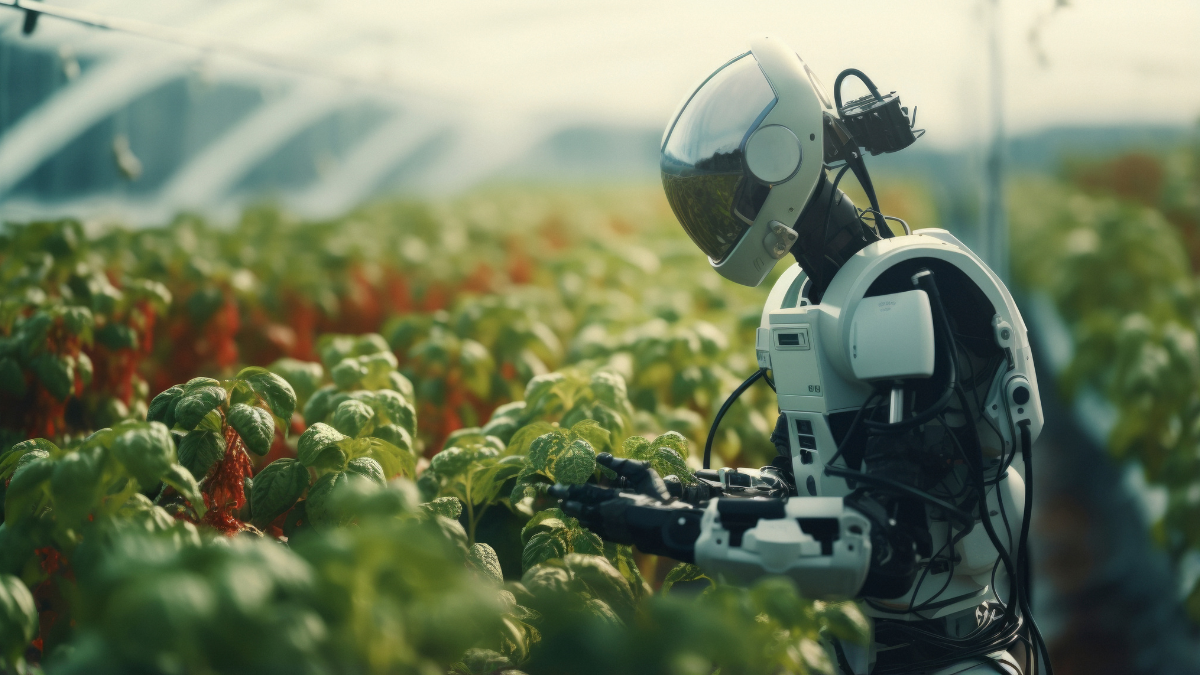Worldwide, the intelligent agriculture market is projected to develop at a compound annual growth rate (CAGR) of 9.1% from 2024 to 2031, from its 2022 valuation of US$11.12 billion to US$22.45 billion. DataM Intelligence, a market research firm, has significantly analyzed the latest study. They have delivered a comprehensive evaluation supported by trustworthy stats, historical information, and strategic insights.
The generated report outlined the leading industry leaders to examine their product offerings, cost schemes, monetary wealth, and ambition. It provided a crystal-clear viewpoint on emerging trends, market dynamics, and competitive landscape. They will influence the industry’s future.
Easy Ways Smart Agriculture Uses Tech on Farms
Using advanced technology like the Internet of Things (IoT), artificial intelligence (AI), sensors or smart devices, robotics, drones, and big data analytics in the farms. Smart agriculture aims to improve farming operations’ sustainability, productivity, and efficiency.
What do you mean by smart agriculture?
Smart agriculture, or farming, is the implementation of modern technologies and data-oriented field operations to improve sustainability in agricultural production.
This technique is adopted to help with data-driven decision-making and waste reduction, it emphasizes automated irrigation, precision farming, animal monitoring, and real-time data analysis.
Where are the top smart agriculture innovators now?
The list of key leaders in the Smart Agriculture market and industry in 2025 includes:
- AGCO
- Ag Leader Technology
- John Deere
- Raven Industries
- Precision Planting LLC
- Trimble
- DeLaval
- AgJunction
- Agribotix
- The Climate Corporation
New Tech That Helps Farmers Grow More with Less
Farmers benefit from the new tech, which helps them grow more crops with less effort. You must have heard about some of the technological advancements in agriculture like BVT (Bee Vectoring Technologies), Precision Agriculture, Livestock Farming Technology, Farm Automation, Real-Time Kinematic (RTK) Technology, Minichromosome Technology, Farm Management Software, and Water Management Technology in 2023-24. Some such prominent technologies helping the farmer grow in 2025 are:
Drone-based Crop Monitoring
Companies enhance accuracy and save labor expenses using drones for aerial visualization, crop monitoring, and pesticide spraying.
AI-Powered Predictive Analytics
Farmers use AI and machine learning technologies to predict crop production, detect disease outbreaks, and determine the best times to sow and harvest.
Electrification and Sustainable Tools
Innovations like electric tractors and autonomous robots support eco-friendly agriculture by lowering emissions and increasing operational efficiency.
Widespread IoT Integration
Farmers are progressively implementing smart sensors and networked devices to track crop health, weather trends, and soil moisture in real time to improve resource management.
Expanded Connectivity in Rural Areas
Satellite internet solutions are helping to close the digital divide by enabling smart agriculture technology to operate smoothly in remote farming locations.
All these modern technologies support farmers in crop growth enhancement with minimal effort. These are the easiest ways IoT is making farming faster and better. The DataM Intelligence stats of Smart Agriculture are accurate and beneficial to study.


